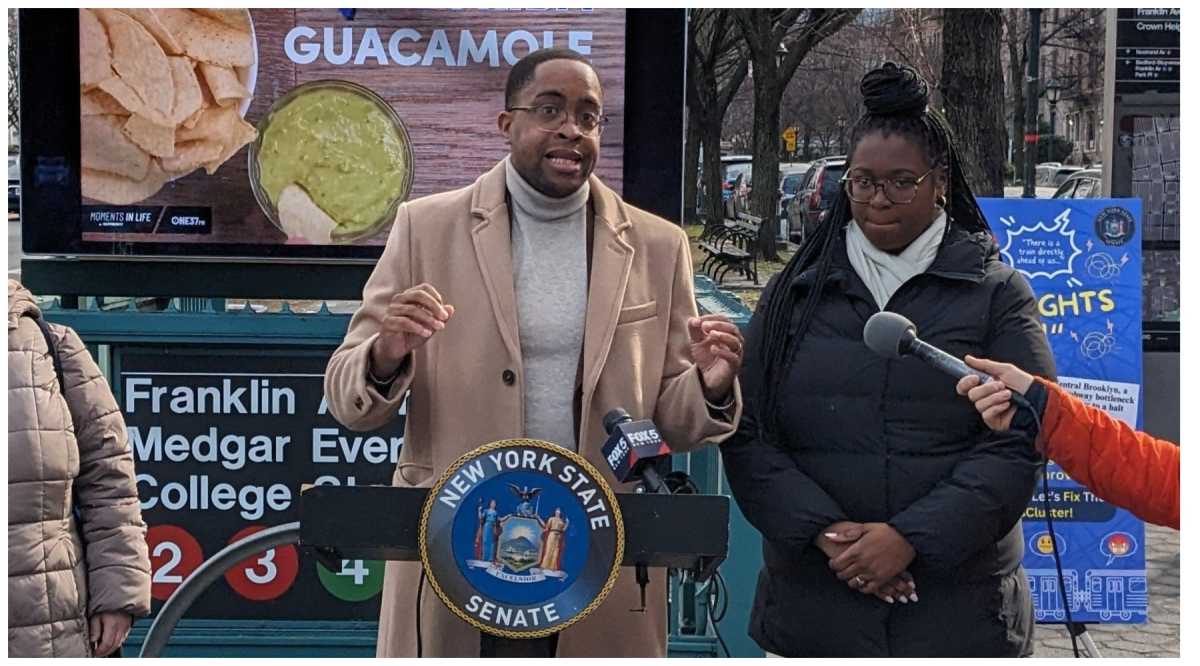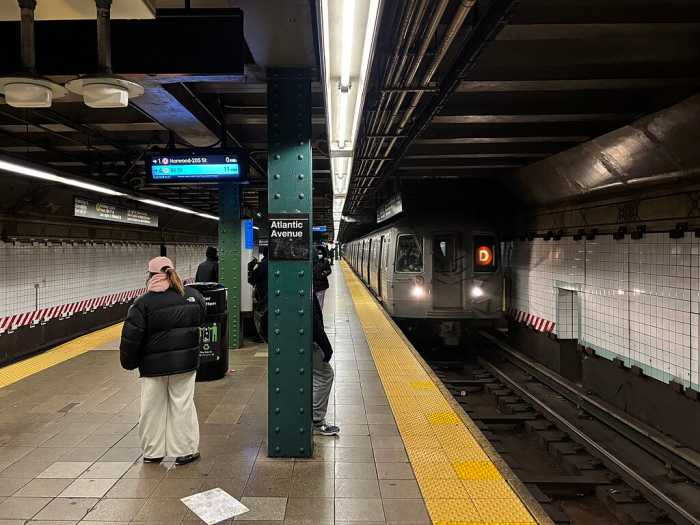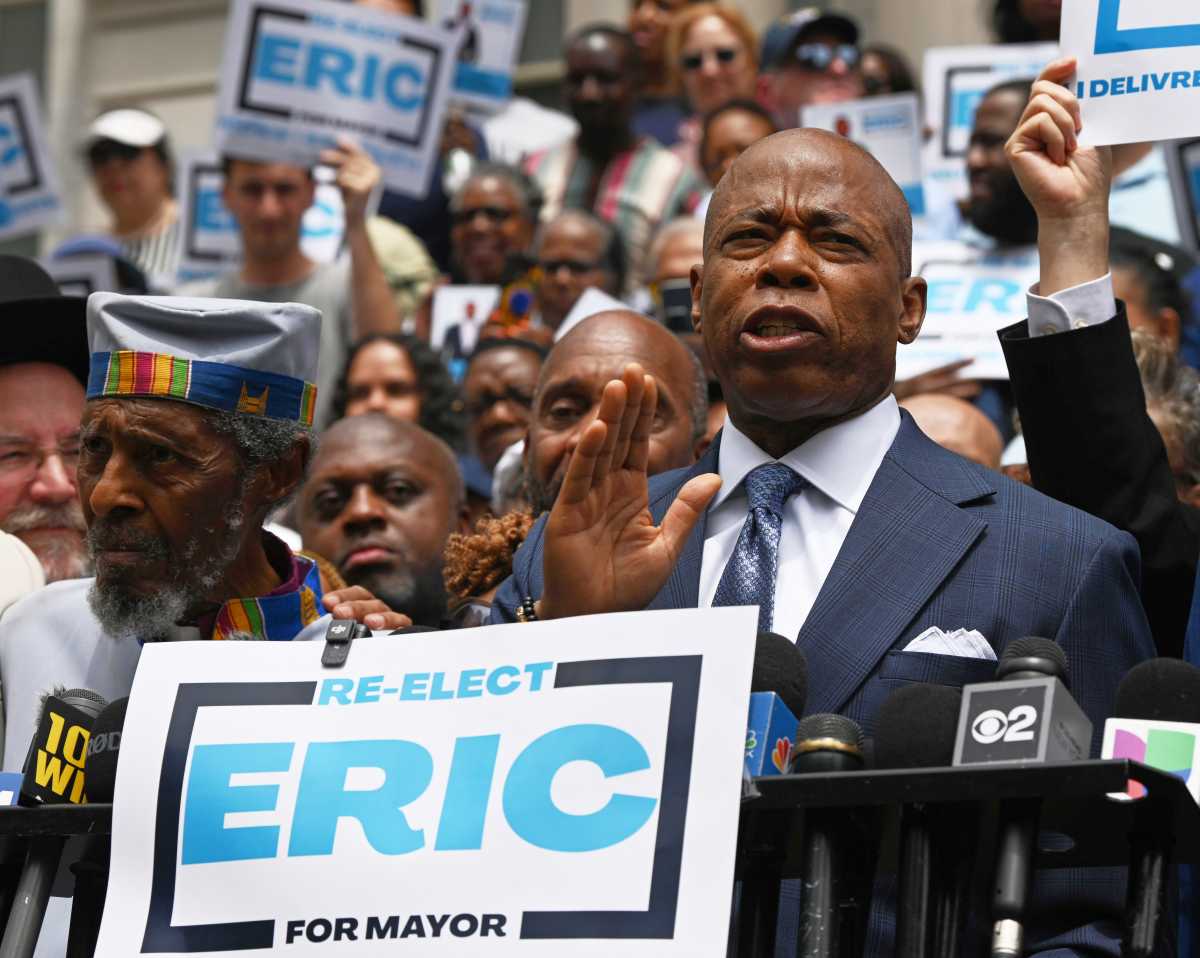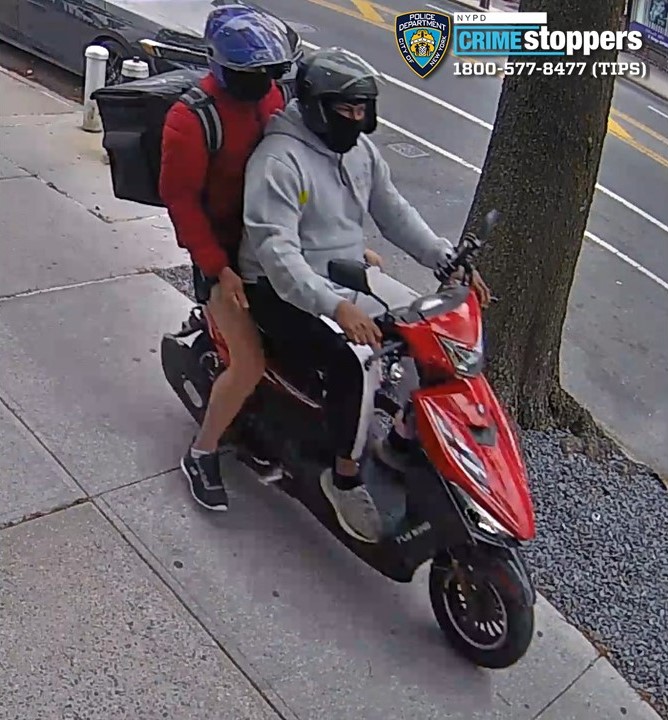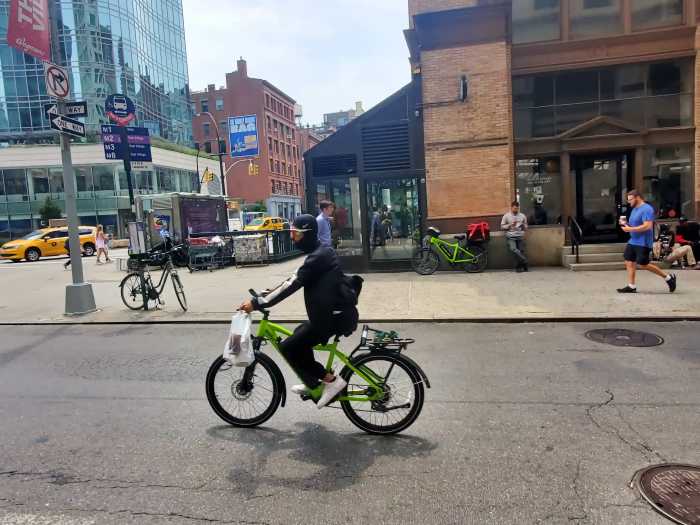Commuter advocates and New York state pols are demanding capital funding in this year’s state budget for the MTA to fix a subway bottleneck issue known as the Crown Heights Cluster.
Brooklyn riders on the 2, 3, 4, and 5 subway lines have lost countless hours to the obsolete track layout at Nostrand Junction, according to the Riders Alliance, who say that saving straphangers time should be a top priority for the MTA as it moves to remedy “decades worth of deferred maintenance.”
Assembly Member Phara Souffrant Forrest and State Sen. Zellnor Myrie joined the Riders Alliance and representatives from TWU Local 100 on Feb. 9 outside the Franklin Avenue-Medgar Evers College station to raise awareness of the problem and the impact it has for those who use the subway routes that traverse the “Crown Heights Cluster.”
“We have many people commuting to and from Crown Heights and Flatbush, predominantly working class people of color, whose commutes are unnecessarily delayed by this jam at Franklin Avenue,” said Souffrant Forrest.
Likewise, Myrie echoed the sentiment that local straphangers have had enough of the bottleneck which sees trains waiting up to two minutes for a clear signal as the 2 and 5 trains cross the 3 and 4 train lines.
“If you’re trying to get medical treatment, if you’re trying to pick up your kid after school, you’re trying to make it to your job, and all of these delays happen with regularity, you have to question why is it that we’re subject to this type of dysfunction,” said Myrie.
Both Brooklyn pols promised to keep fighting for the allocation of capital funds in this year’s state budget, due in April, so the problem can be remedied.
“The MTA has already studied this and found that there’s a simple fix that could end these delays, we just need to make the investment,” said Souffrant Forrest. “And we shouldn’t just be looking at ways to fix the existing jam, we should be looking at ways to expand and improve service.”
According to the MTA’s 20-year Needs Assessment report, a potential enhancement of the junction could cost $410 million and could impact an estimated 320,000 daily straphangers.
The MTA did not respond to Brooklyn Paper’s queries regarding the Crown Heights Cluster, but previously told Gothamist that the agency is looking into addressing the subway bottleneck and that the remedy may include building a new set of tracks to allow express and local trains avoid the junction altogether.


